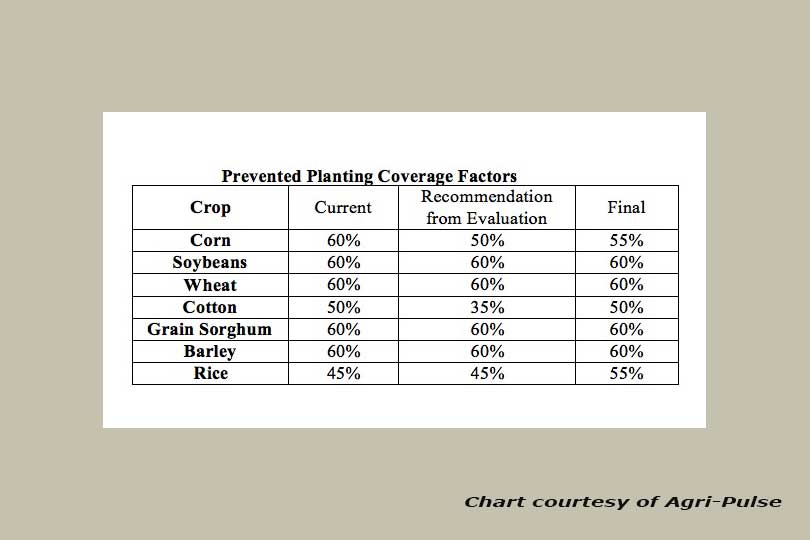The U.S. Department of Agriculture’s (USDA) Risk Management Agency (RMA) announced updates to improve the Prevented Planting Program.
“These improvements will ensure that the program continues to be a well-run program that provides a strong safety net for producers,” RMA noted in a release.
Prevented planting coverage provides farmers protection if they are unable to plant an insured crop by the final planting date. When adverse weather prevents planting, a preventive planting payment is made to compensate for the farmer’s preplanting costs generally incurred in preparation for planting the crop.
“Prevented planting is usually used when it is too wet to plant, but it has been used for drought as well,” said Brant Wilbourn, Texas Farm Bureau associate director of Commodity and Regulatory Activities. “Texas rice growers on the Colorado River had to use it when there was no irrigation water available upstream.”
These costs can include purchase of machinery, land rent, fertilizer, actions taken to ready the field, pesticide, labor and repairs. The prevented planting factor is a percentage of the individual insurance guarantee and varies by crop, based on an estimate of preplanting costs.
“When farmers take prevented planting on a crop, they receive a payment for a percentage of their coverage level of the policy that was taken out,” Wilbourn said. “For example, a cotton farmer who has a 60 percent revenue policy that takes prevented planting on his crop will receive 50 percent of the coverage level of the 60 percent revenue policy provided.”
The updates are in response to a USDA Office of Inspector General (OIG) report that looked at prevented planting claims during a three-year period from 2008 to 2011, according to Agri-Pulse.
The OIG found that “out of concern for covering a producer’s preplanting costs in all cases, RMA set current prevented planting coverage levels above the percentages of guarantees that insureds needed to cover average preplanting cost. As a result, by establishing coverage levels that provided over $480 million in potentially excessive payments, we believe RMA inadvertently provided incentives to encourage prevented planting claims.”
RMA commissioned a third-party evaluation of prevented planting coverage, which provided recommendations for determining prevented planting factors. The evaluation was available for public comment from Jan. 30, 2015 to April 12, 2015. RMA evaluated the public comments and determined that adjustment to the evaluation’s recommendations were necessary.
“Today’s rulemaking will improve RMA’s ability to manage the prevented planting factors moving forward,” RMA said.
RMA reviewed prevented planting factors for barley, corn, cotton, grain sorghum, rice, soybeans and wheat for 2017. Prevented planting factors will be reviewed and updated for all crops with prevented planting coverage. These first seven crops are being updated for the Spring 2017 planting season.
“Over time, the prevented planting factors may go up or down depending upon changes in input costs. RMA will evaluate the effectiveness of the recent changes and modify them as needed in coming years.” RMA said.
The evaluation recommended that the prevented planting coverage factor for corn be reduced from 60 percent to 50 percent. The RMA updated corn’s coverage factor to 55 percent.
“Our members who grow corn will be impacted due to the lower protection that will be available to them if they need to use prevented planting,” Wilbourn said. “With the farm economy the way it is now, farmers need access to as many risk management tools as possible.”
The evaluation recommended the prevented planting coverage factor for cotton be reduced from 50 percent to 35 percent. The RMA made no changes in its final number.
RMA increased rice prevented planting coverage factor by 10 percent to 55 percent, up from 45 percent.
“Rice farmers benefit from this change, because they are able to get more from prevented planting,” Wilbourn said.

